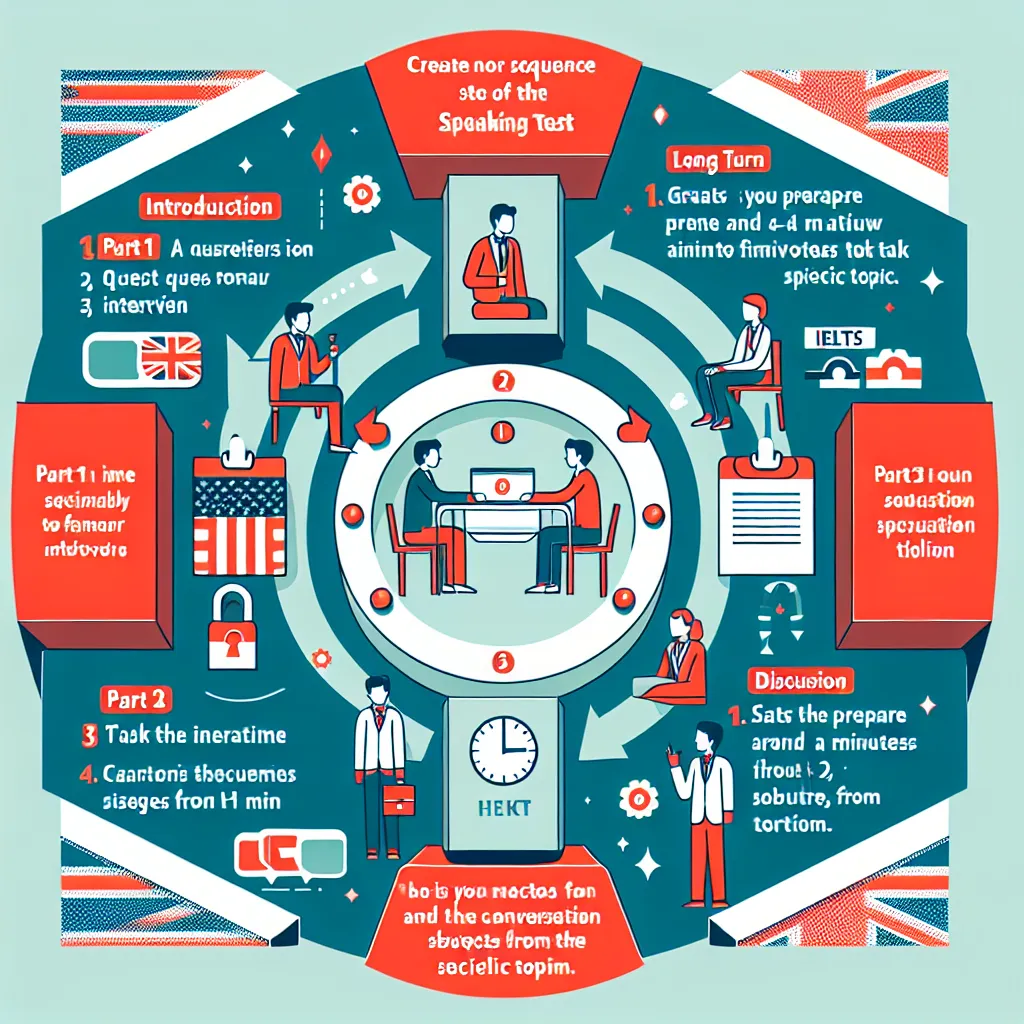Are you preparing for the IELTS Speaking test and feeling anxious about how to tackle challenging questions? Don’t worry! In this comprehensive guide, we’ll walk you through one of the most common topics in IELTS Speaking Part 2: describing a time when you had to make a tough decision at work. We’ll provide you with expert tips, sample answers, and key vocabulary to help you excel in your IELTS Speaking exam.
Nội dung bài viết
Understanding the IELTS Speaking Test Structure
Before we dive into the specific topic, let’s quickly review the structure of the IELTS Speaking test:
- Part 1: Introduction and Interview (4-5 minutes)
- Part 2: Long Turn (3-4 minutes)
- Part 3: Two-way Discussion (4-5 minutes)
Our main focus will be on Part 2, but we’ll also cover related questions for Parts 1 and 3 to give you a comprehensive preparation.
 IELTS Speaking Test Structure
IELTS Speaking Test Structure
Part 1: Introduction and Interview
In this section, the examiner may ask you some general questions about work and decision-making. Here are some possible questions and sample answers:
- Do you work or are you a student?
- What kind of decisions do you usually make at work/school?
- Do you find it easy to make decisions?
Sample answer (Band 7-8):
“I’m currently working as a marketing specialist at a tech company. In my role, I often have to make decisions about campaign strategies and budget allocation. While I wouldn’t say decision-making is always easy, I’ve developed a systematic approach that helps me weigh the pros and cons effectively.”
Part 2: Long Turn
Now, let’s focus on the main topic: describing a time when you had to make a tough decision at work. Here’s a sample cue card:
Describe a time when you had to make a tough decision at work
You should say:
- What the decision was about
- Why it was a difficult decision
- How you made the decision
- What the outcome was
Sample Answer (Band 7-8)
“I’d like to talk about a challenging decision I had to make at my previous job as a project manager. The decision was whether to extend a crucial project deadline or deliver it on time with fewer features than initially promised.
This was a particularly difficult decision because both options had significant consequences. On one hand, extending the deadline would disappoint our client and potentially damage our reputation. On the other hand, delivering an incomplete product could lead to dissatisfaction and loss of future business.
To make this decision, I followed a structured approach. First, I gathered input from my team members and stakeholders. Then, I analyzed the potential risks and benefits of each option. I also consulted with senior management to understand the company’s priorities.
After careful consideration, I decided to propose a compromise solution to the client. We would deliver the core features on time and provide the remaining features in a phased approach over the next month, at no additional cost.
The outcome was largely positive. The client appreciated our transparency and commitment to quality. Although there was some initial disappointment, our approach ultimately strengthened our relationship with the client. This experience taught me the importance of clear communication and creative problem-solving in difficult situations.”
Sample Answer (Band 8-9)
“I’d like to recount a time when I faced a formidable decision in my role as a Human Resources Manager at a multinational corporation. The decision revolved around whether to implement a large-scale restructuring plan that would significantly improve efficiency but also result in numerous job losses.
This decision was exceptionally challenging due to its far-reaching implications. On one hand, the restructuring promised to enhance our competitive edge and ensure long-term sustainability. Conversely, it would lead to considerable job losses, potentially damaging employee morale and our company’s reputation in the community.
To navigate this complex situation, I employed a comprehensive decision-making framework. Initially, I conducted extensive research, analyzing similar cases in our industry and their outcomes. I then organized focus groups with employees from various departments to gauge the potential impact on workforce dynamics. Additionally, I collaborated closely with the finance team to create detailed projections of the financial implications of both implementing and not implementing the restructuring.
After meticulous deliberation, I decided to recommend a modified version of the restructuring plan. This revised approach involved a phased implementation over two years, coupled with a robust retraining program for affected employees and partnerships with local businesses to assist in job placements.
The outcome was multifaceted. While we did see some initial resistance and a temporary dip in morale, the long-term results were largely positive. The company’s efficiency improved substantially, and our market position strengthened. Moreover, our commitment to supporting affected employees garnered respect within the industry and local community. This experience reinforced the importance of balancing business needs with ethical considerations and the value of innovative solutions in navigating complex corporate challenges.”
Follow-up Questions
- How do you handle the pressure of making important decisions?
- Do you think it’s better to make decisions quickly or take time to consider all options?
Sample answer (Band 8-9):
“When it comes to handling the pressure of important decisions, I’ve found that maintaining a calm and analytical mindset is crucial. I often use stress-management techniques like deep breathing or brief meditation to clear my mind before tackling a significant decision. Additionally, I’ve learned to compartmentalize the emotional aspects of decision-making, focusing on objective data and long-term consequences rather than getting overwhelmed by immediate pressures.
Regarding the speed of decision-making, I believe it’s a delicate balance that depends on the situation. In fast-paced environments, the ability to make quick, informed decisions can be a valuable asset. However, for decisions with far-reaching implications, I advocate for a more measured approach. This involves thoroughly researching all available options, consulting with relevant stakeholders, and considering potential long-term ramifications.
Ultimately, the key is to develop sound decision-making processes that can be applied efficiently in various contexts. This might involve creating decision matrices for complex choices or establishing clear criteria for quick decisions. By honing these skills, one can strike an optimal balance between speed and thoroughness in decision-making.”
Part 3: Two-way Discussion
In this section, the examiner will ask more abstract questions related to decision-making in the workplace. Here are some possible questions and sample answers:
- How do you think technology has changed decision-making in the workplace?
- What role do you think emotions should play in making business decisions?
- How can companies ensure they make ethical decisions?
Sample answer (Band 8-9):
“Technology has revolutionized decision-making in the workplace in several ways. Firstly, it has greatly enhanced our access to data, allowing for more informed and evidence-based decisions. Advanced analytics and AI-powered tools can now process vast amounts of information quickly, providing insights that were previously unattainable. This has led to a shift towards data-driven decision-making in many organizations.
However, this technological advancement also presents challenges. The sheer volume of data available can sometimes lead to analysis paralysis, where decision-makers become overwhelmed. Additionally, there’s a risk of over-relying on algorithms and neglecting human intuition and experience. The key is to strike a balance, using technology as a tool to augment human decision-making rather than replace it entirely.
Regarding emotions in business decisions, I believe they play a nuanced role. While it’s important to maintain objectivity and base decisions on concrete facts and logic, emotions shouldn’t be entirely discounted. Emotional intelligence can provide valuable insights into how decisions might affect stakeholders, team dynamics, and company culture. Moreover, passion and intuition, which have emotional components, can drive innovation and risk-taking in business.
The challenge lies in harnessing emotions constructively without letting them cloud judgment. This requires a high level of self-awareness and the ability to recognize and manage one’s own biases. Leaders should strive to create a culture where emotions are acknowledged and discussed openly, but where final decisions are grounded in rational analysis.
As for ensuring ethical decision-making in companies, this requires a multi-faceted approach. Firstly, organizations need to establish a strong ethical framework that goes beyond mere compliance with laws and regulations. This involves defining clear values and ethical guidelines that are woven into the company’s culture and operations.
Secondly, companies should implement robust governance structures, including ethics committees and regular audits of decision-making processes. Training programs on ethical decision-making can also be valuable in equipping employees at all levels with the tools to navigate complex ethical dilemmas.
Furthermore, fostering a culture of transparency and accountability is crucial. This includes creating safe channels for employees to report ethical concerns without fear of reprisal, and ensuring that ethical considerations are explicitly factored into performance evaluations and promotion decisions.
Lastly, companies should strive to diversify their decision-making bodies. A variety of perspectives can help identify potential ethical issues that might be overlooked in a more homogeneous group. By implementing these measures, companies can create an environment where ethical considerations are integral to every business decision.”
Key Vocabulary and Phrases for High Scores
To boost your IELTS Speaking score, incorporate these advanced vocabulary items and phrases into your responses:
- Weigh the pros and cons – To carefully consider the advantages and disadvantages of something
- Stakeholders – People or groups who have an interest in a company’s decisions
- Mitigate risks – To reduce the possible negative effects of something
- Ethical implications – The potential moral consequences of a decision
- Collaborate – To work together with others to achieve a goal
- Innovative solution – A new and creative way to solve a problem
- Long-term ramifications – The effects or consequences that will be felt for a long time
- Transparency – Being open and honest in one’s actions and communications
- Data-driven decision-making – Making choices based on analyzed data rather than intuition
- Ethical dilemma – A situation that requires a choice between options that are or seem equally unfavorable or mutually exclusive
Remember to use these phrases naturally and in the appropriate context to demonstrate your language proficiency.
Tips from an IELTS Examiner
As an experienced IELTS examiner, here are my top tips for excelling in the Speaking test:
- Practice regularly: Familiarity with the test format and question types will boost your confidence.
- Develop your ideas: Don’t just give short answers. Explain your thoughts and provide examples.
- Use a variety of vocabulary and grammar structures: This demonstrates your language proficiency.
- Speak clearly and at a natural pace: Don’t rush, but also avoid long pauses.
- Stay on topic: Make sure your answers are relevant to the questions asked.
- Be honest: If you don’t understand a question, it’s okay to ask for clarification.
- Show enthusiasm: Engaged and animated responses often score higher.
By following these tips and using the sample answers as inspiration, you’ll be well-prepared to tackle the “tough decision at work” topic and other challenging questions in your IELTS Speaking test. Remember, the key to success is practice and confidence. Good luck with your IELTS journey!
For more IELTS Speaking preparation, check out our guides on describing a book that had a big impact on your life and describing a time when you had to take charge of a difficult situation.


